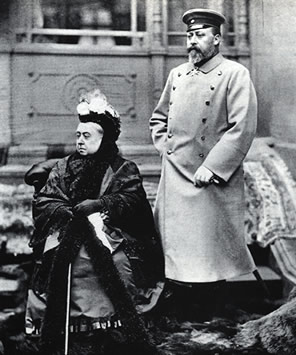
Queen Victoria, 1899
Unmounted (ref: 2039)
Lithographic reproduction of a hand-coloured woodcut
Tags: William Nicholson lithograph woodcut animals leisure life drawing painted en plein air portraits women

Tags: William Nicholson lithograph woodcut animals leisure life drawing painted en plein air portraits women
Provenance: The William Heinemann Archive 2004
Published by William Heinemann 1899 (September)
When Nicholson offered his jubilee portrait of Queen Victoria to William Heinemann, the publisher demurred. His partner Sidney Pawling then showed it to W. E. Henley, the editor of The New Review, who promptly seized it for publication. It appeared in 1897 . as a double-page supplement and was immediately successful. After the collapse of The New Review it was re-issued by Heinemann as no. 1 in the first series of Twelve Portraits, 1899. Nicholson's image of the Queen as 'an animated tea-cosy' became one of the lasting impressions of the final years of her reign. The compliment he cherished most was the one he received from Whistler at their first meeting.

Appropriately enough, it took place at the house of William Heinemann at Thames Ditton, When Whistler described Queen Victoria as 'A wonderful portrait, Mr Nicholson', the young artist could only reply that she was a wonderful subject. Whistler's rejoinder could not have meant more; 'You know, Her Majesty might say the same of you.'
Lent by the Fitzwllliam Museum, Cambridge.
The Twelve Portraits series
was published in September 1899 in two editions: a portfolio of
hand-coloured woodcuts and a portfolio of lithographic reproductions
mounted ready for framing. The majority of the prints had initially
been conceived as individual works, and it was expedience alone that
brought them together in a set; but the series in its published form is
not without homogeneity. Certainly it fulfilled its aim of portraying a
representative selection of the most notable men and women of the day.
`A few years hence,' claimed a reviewer in the 9 December 1899 issue of
Literature, `Mr Nicholson's portfolio of Twelve Portraits ... will be of undoubted historical value.' Perhaps this was going too far, but mans- critics believed that Twelve Portraits contained Nicholson's best work, and indeed it was this series that was to earn the artist a gold medal at the Exposition Universelle in Paris in 1900.
Early in 1901 a second series of 12 portraits was proposed. Heinemann
sent Nicholson a list of suggested sitters in July, but work on the
project proceeded very slowly and it was not until the summer of 1902
that the portraits were finally delivered. Nicholson, always ready to
re-use existing material, commandeered his Lord Kitchener (1898) and
William 11 (1899) for this series (the latter was published in a
slightly revised form), and also made use of studies of Thomas Edison,
Theodore Roosevelt and Mark Twain made in New York in the autumn of
1900. The remaining seven portraits were conceived and executed in
1901/2: Queen Alexandra , Joseph Chamberlain (Colonial Secretary
at the time of the Boer War), Li-Hung Chang (the Chinese statesman),
Henrik Ibsen (whose plays Heinemann published in English translations),
Sada Yacco (the Japanese actress who modelled for Rodin), Eleonora
Dose (the great Italian tragedienne), and Pope Leo XIII.